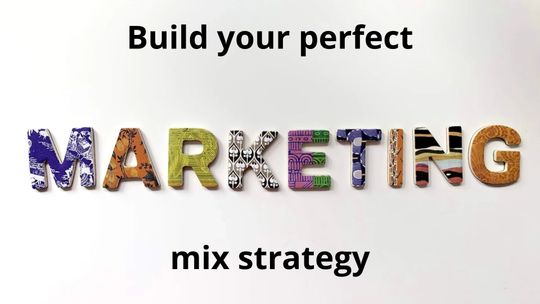
It’s also known as the four Ps, and it’s one of the first things you’re taught in your Introduction to Marketing class, and say them with me because if you took that class, you know these four words by heart:
- Product: What you are selling, a product, a service, or both.
- Price: How much customers are paying for it.
- Place: where are you selling your product or service, it can be a physical place or an online channel.
- Promotion: these are the communications that make your target market aware of what you are selling.
Now you know what a marketing mix is made up of let’s walk you through the steps of developing a marketing mix strategy for your business:
1. Set your goals
The first thing you need to do is clearly define what you want. Also is important to define a time frame within which the goals are achieved.
2. Target audience
In order to communicate effectively with your audience you need to know who they are and which channel is the best one to communicate with them. Define your buyer persona, with a clear picture of who you’re marketing to, it’s much easier to develop qualified prospects, guide product development to suit the needs of your target customers and align all your marketing, sales and services strategies.
3. Establish your budget
It is imperative that you define and allocate a budget, especially for a small business. Set how much money are you willing to spend on product innovation, consumer research and product promotion.
4. Unique selling proposition
What are the attributes that make your business stand out from its competition? At its core, a unique selling proposition should quickly answer this potential customer’s most immediate questions when they encounter your brand.
5. Pricing strategy
Based on the market research you have done and your unique selling proposition, understand how unique is your product, and what the prices your competitors are setting.
Price is directly related to the positioning in the market, the speed at which you want to penetrate your market, and your company’s revenue goals and profit margin.
6. Choose your distribution channels
In the marketing mix, this is about the ‘place’, where your product or service will be marketed. Tangible products can be sold in a physical location like a store, but they can also be sold online or over the phone.
Besides selling online or not, generally, the distribution options are classified under 2 groups, direct or indirect:
- Direct: Selling directly to consumers.
- Indirect: Selling through wholesalers or retailers.
7. Promotional techniques
Once you have defined who is your target audience, you need to make them aware of your product or service.
While this does include paid initiatives like commercials and advertising, the promotion also entails organic initiatives like word-of-mouth marketing, content marketing, and public relations.
Done right, your market mix will help you reach your target market effectively and sell your product making them understand why your product or service is better than those of your competitors.
We have extensive experience in developing and executing marketing plans. We’re here to help so you can focus on other parts of your business. Contact us and sign up for our newsletter to get the latest tips and trends in your inbox.




